Table of contents
- Carburetor works in slow motion How a carburetor really works
- 28,546 frames per second
- From 19:30 minutes it will be concrete
- Conclusion
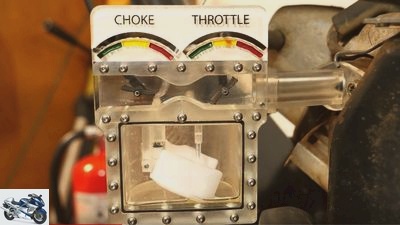
Smartereveryday
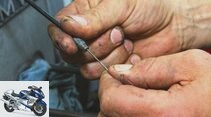
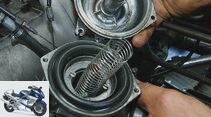
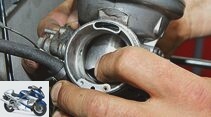
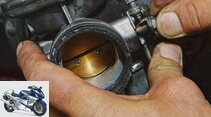
49 pictures
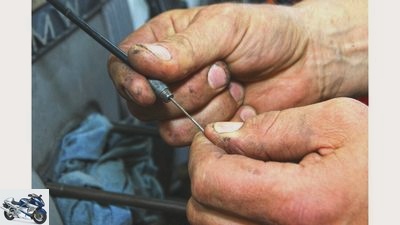
Schoch
1/49
If the engine does not immediately idle when you let go of the throttle grip, the ability of the throttle cable to operate could also be impaired.
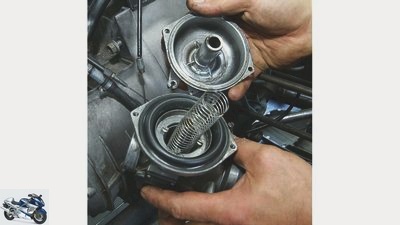
Schoch
2/49
To dismantle the slide, the carburetor dome must first be dismantled in the case of constant pressure carburetors.
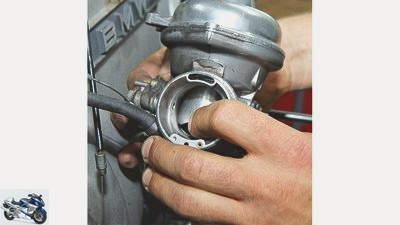
Schoch
3/49
Checking the slide play with your finger is only possible with the carburettors removed.
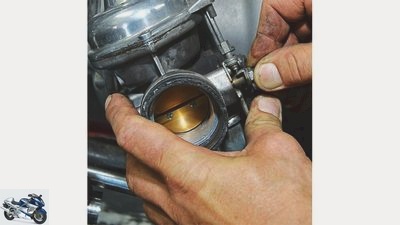
Schoch
4/49
A loose throttle valve is noticeable by an unstable idle gas. Your two fastening screws must be secured. A worn out throttle valve axis lets the engine draw in outside air and run too lean.
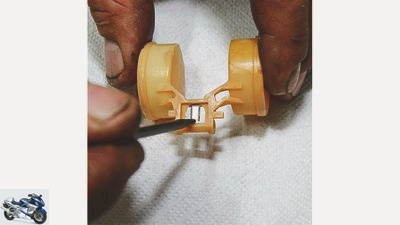
Schoch
5/49
To adjust the float level, carefully bend the suspension of the float needle valve.
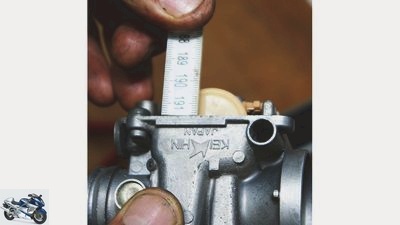
Schoch
6/49
The reference mark when measuring the float level is usually the sealing surface of the carburetor housing.
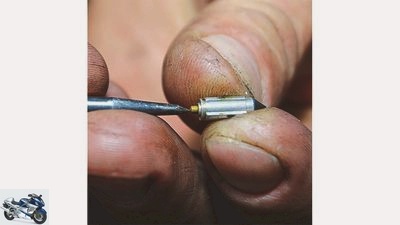
Schoch
7/49
Make sure that the small compensating spring mechanism on the float needle valve works.
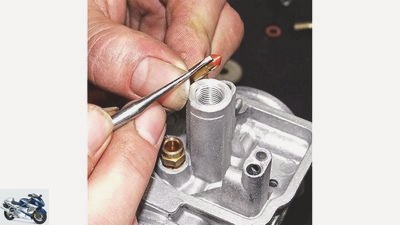
Schoch
8/49
The tip of the float needle valve must be in perfect condition. Otherwise gasoline will flow all the time.
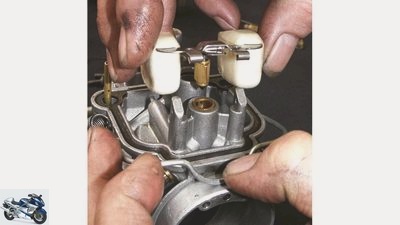
Schoch
9/49
No hassle when the swimmer takes off, because the sensitive float needle valve is attached to it.
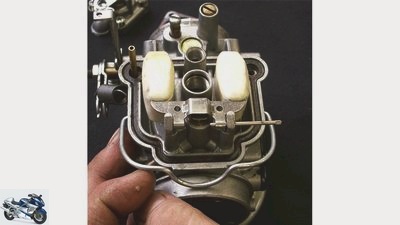
Schoch
10/49
To remove the float, carefully pull out its only plugged-in axis.
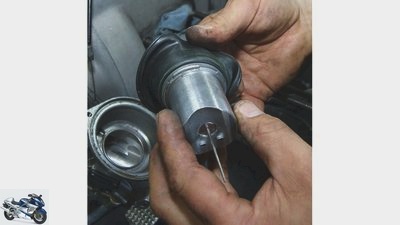
Schoch
11/49
Here the surface of the slide and the condition of the vacuum membrane are perfect.
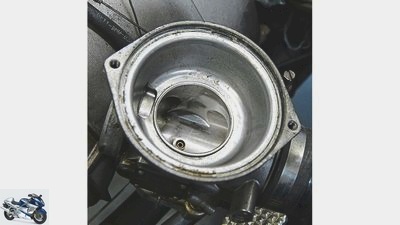
Schoch
12/49
The slide shaft must not have any grooves or scratches in the carburetor housing either.
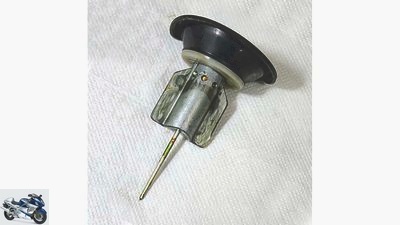
Schoch
13/49
This slide is ripe for the scrap! The wear created excessive play in a Keihin carburetor.
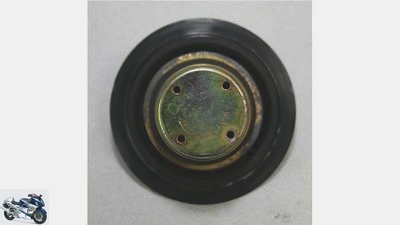
Schoch
14/49
If the tank ventilation is clogged (here in the tank cap), a vacuum builds up in the tank over time.
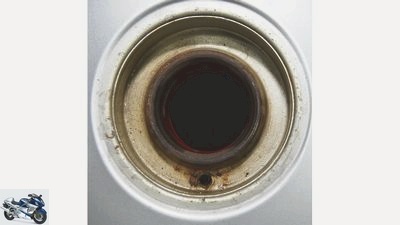
Schoch
15/49
If the tank cap water drain is blocked or rusted through, water will get into the tank.
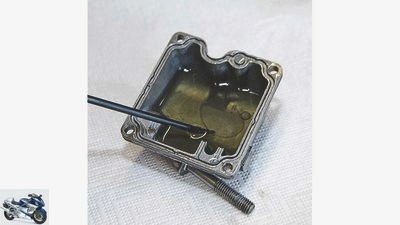
Schoch
16/49
Here, water in the gasoline has collected into a clearly visible bubble that clogs the nozzles as soon as it is sucked in.
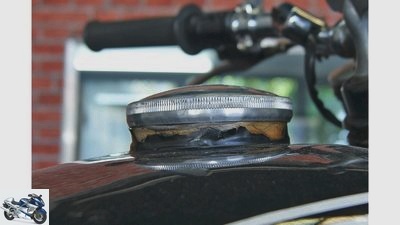
Schoch
17/49
When the tank cap is opened, splinters of paint and rust often get into the tank from the filler neck.
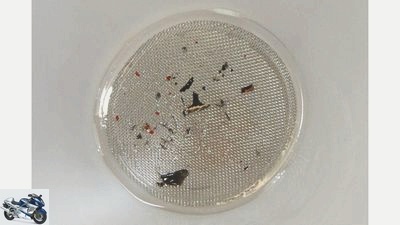
Schoch
18/49
… If it only picks up dirt particles, it can be used again as long as it is carefully filtered.
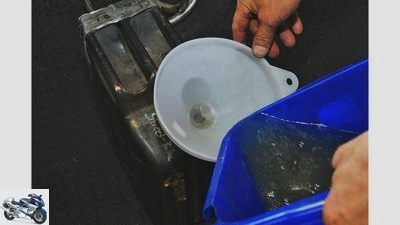
Schoch
19/49
If there is dirt or water in the carburetor, the gasoline must be drained from the tank. Is the gasoline not stale and showing …
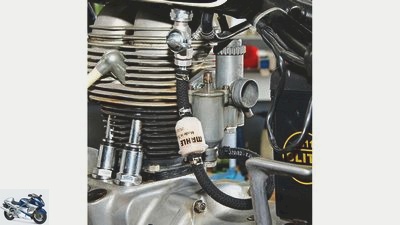
Schoch
20/49
Intermediate filters are only an emergency solution. Better to clean and de-rust the tank.
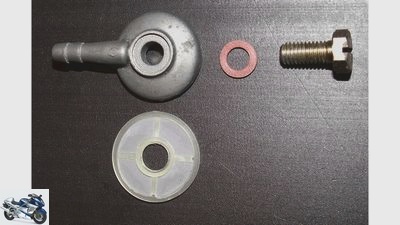
Schoch
21/49
Some carburetors have a gasoline filter directly on the carburetor housing. This must be cleaned regularly.
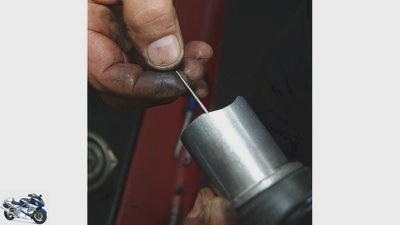
Schoch
22/49
The nozzle needle must neither have excessive play in the slide nor any grooves on the surface.
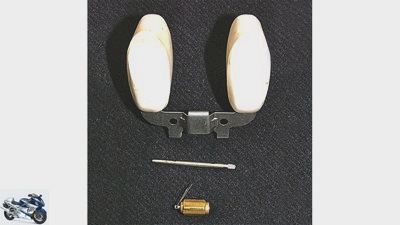
Schoch
23/49
The float and float needle valve are responsible for the correct fuel level in the carburetor.
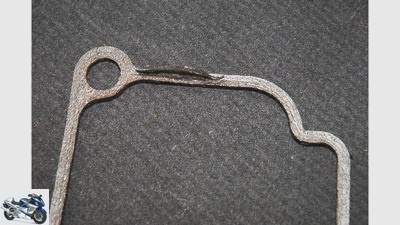
Schoch
24/49
The float can get caught because of such a squashed float chamber seal.
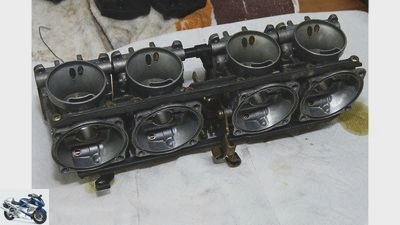
Schoch
25/49
Before long downtimes, it is advisable to preserve the carburettor by dismantling it and painting it with a thin layer of engine oil.

Schoch
26/49
With the engine running, the air intake system can be checked for leaks with a starter spray or engine cleaner.
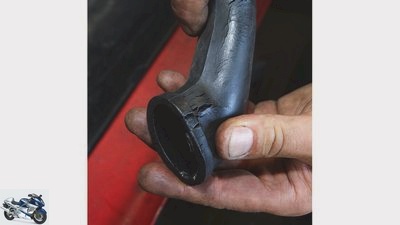
Schoch
27/49
No way! Porous or brittle intake ports must be replaced immediately.
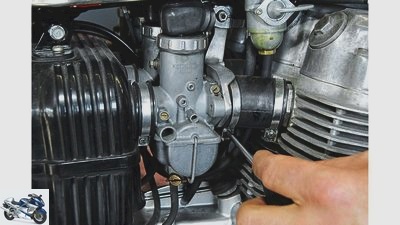
Schoch
28/49
Tighten the hose clamps on the intake manifold fully, but not too tightly, otherwise cracks may form. Every hose clamp must be checked, especially the one after the carburetor.
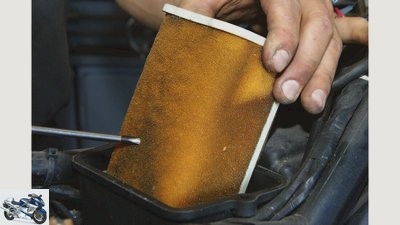
Schoch
29/49
Foam filters can be washed out with mild, soapy water .
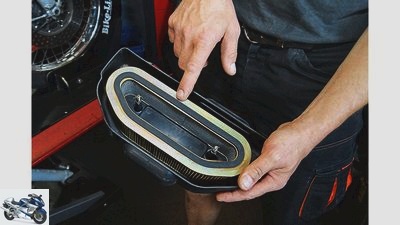
Schoch
30/49
A seal on the air filter element ensures that no unfiltered air flows past it.

Schoch
31/49
When checking the air filter element, pay attention to the gaps between the fins, because this is where the dirt is located.
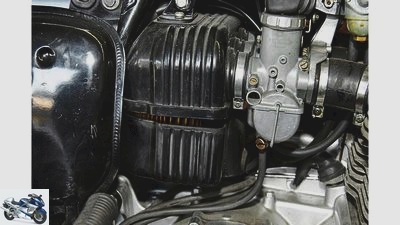
Schoch
32/49
The air filter housing and its seals must not be damaged.
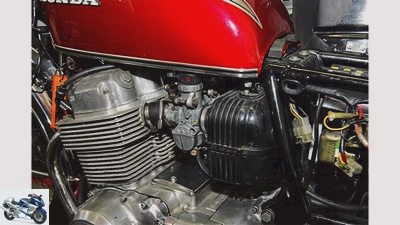
Schoch
33/49
If the engine doesn’t run smoothly, it doesn’t always have to be due to the carburetors. Therefore, first rule out other possible sources of error before removing and dismantling the carburetor.
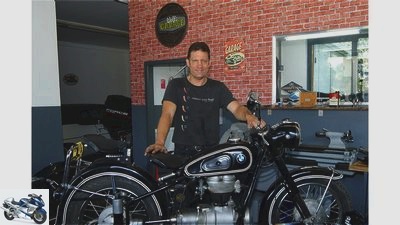
Schoch
34/49
However, before professionals like Wolfgang Schelbert from Seeshaupt (www.wolfis-garage.de) tackle the carburetor, they first rule out other causes. “Only when you can rule out faults in the ignition, fuel supply, electrics or valve clearance, the carburetor or their peripherals come into consideration as the cause.”
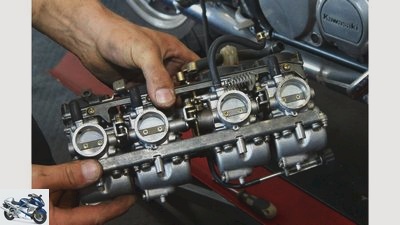
Schoch
35/49
When the engine is beating, there is no need for serious misery. Often only the carburettors are the reason. We show how to find out about mistakes.
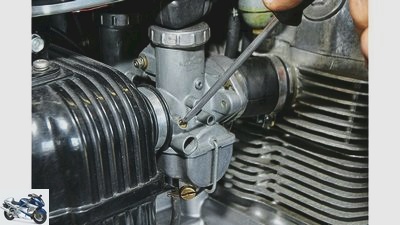
Schoch
36/49
Before removing the gas mixture screw, screw it all the way in and count the number of turns exactly. This “basic setting” makes subsequent assembly and coordination considerably easier.
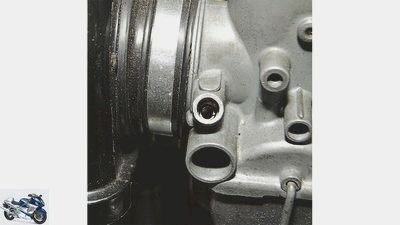
Schoch
37/49
If the O-ring of the gas mixture screw is missing or damaged, the carburetor draws in external air at this point.
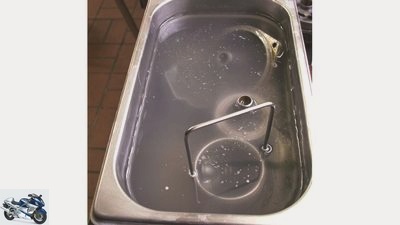
Schoch
38/49
For heavily soiled carburetors, the ultrasonic bath is often the last resort.
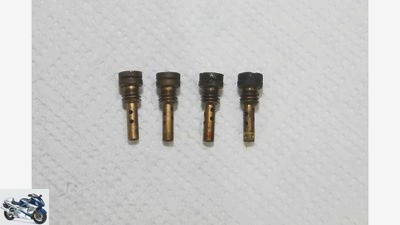
Schoch
39/49
The two left idle nozzles can still be cleaned. The two on the right are junk.
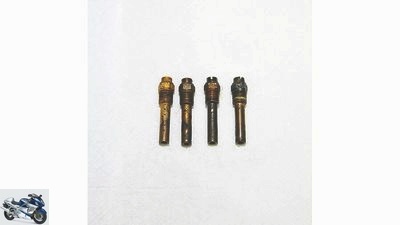
Schoch
40/49
This clearly shows the different degrees of water and resin attack on the main nozzles.

Schoch
41/49
… is gummy or dirty from several carburetors, they should all be dismantled and cleaned.
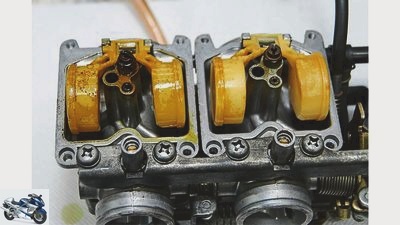
Schoch
42/49
The resin-like residues also covered the float and the carburetor nozzle. Even if only one …
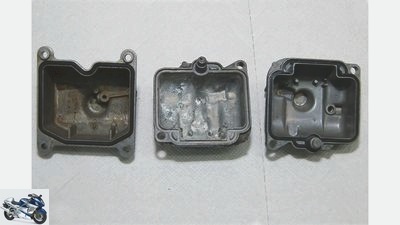
Schoch
43/49
Typical soiling in comparison (from left to right): resinified, corroded and clean.
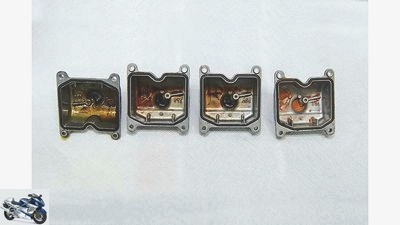
Schoch
44/49
After long periods of inactivity, it is essential to remove all carburettors for precise control. Here you can see from the residue build-up in the float chambers that the bike was on the side stand.
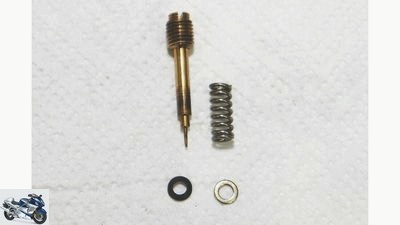
Schoch
45/49
The small washer protects the O-ring from damage by the spring.
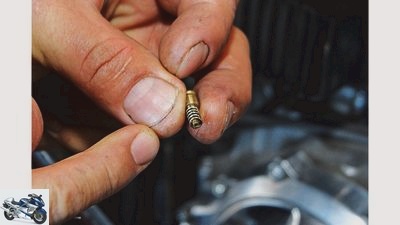
Schoch
46/49
A perfect condition of the gas mixture screw is important for the correct setting of the carburetor.
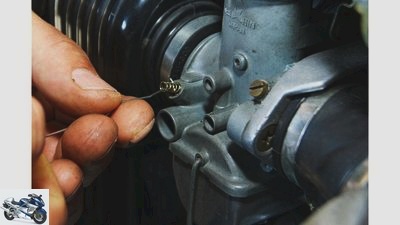
Schoch
47/49
O-ring and locking spring can usually only be pulled out of the thread with a hook.
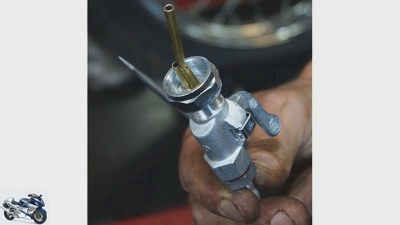
Schoch
48/49
If there is insufficient fuel flow, first check the fuel line and the function of the fuel tap.
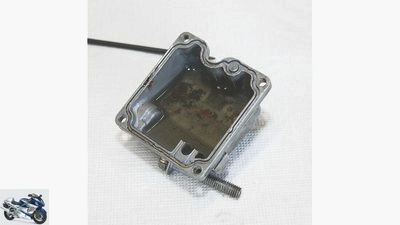
Schoch
49/49
With carburetors and petrol taps without a filter, all dirt particles collect in the float chamber.
counselor
workshop
Carburetor functionality in the video
Carburetor works in slow motion
How a carburetor really works
A mechanical engineer wanted to know exactly how a carburetor works. For a real perspective, he constructed a transparent copy using 3D printing and shows how it works in the video.
Jens Kratschmar
07/13/2021
Destin from the Youtube channel SmarterEveryDay wanted to know how a carburetor really works. His father explains it very well to him what exactly happens, but remains a secret. Destin uses 3D printing to construct a carburetor out of acrylic glass. With throttle valve, choke, float chamber and of course the important Venturi cross-section. But all theory is gray: That’s why Destin built this DIY carburetor on his old man’s tiller.
\ n<div class = \&# 34; v-A_-custom-html v-A_-custom-html – video \ “>\ n<iframe width = \&# 34; 100% \&# 34; height = \&# 34; 315 \&# 34; src = \&# 34; https: //www.youtube.com/embed/toVfvRhWbj8 \&# 34; title = \&# 34; YouTube video player \&# 34; frameborder = \&# 34; 0 \&# 34; allow = \&# 34; accelerometer; autoplay; clipboard-write; encrypted-media; gyroscope; picture-in-picture \&# 34; allowfullscreen></ iframe>\ n</ div>\ n</ div>\ n&# 34;,&# 34; consentGroup&# 34;: null}”>
28,546 frames per second
The high-speed camera Destin used for the experiment recorded 28,546 frames per second. For comparison: the eye takes pictures from 18 to 30 frames per second as film. So the camera runs 10,000 times faster. You start the engine and it can actually be operated by this rudimentary mixture preparation. You can see that the gasoline mixes with the air and a damp cloud clearly wets the intake duct. So far, so unspectacular. But the recordings of the high-speed camera are fascinating: Individual drops of gasoline are drawn out of the main nozzle by the inertia of the air that is sucked in, where they remain, form a floating ball and are then atomized by the next intake stroke and its negative pressure in an implosion.
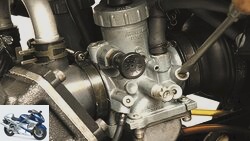
workshop
Adjust the carburetor
This is how the correct mixture composition is achieved
read more
From 19:30 minutes it will be concrete
The video is a good 25 minutes long and is in pretty flat American. You have to want that. If you want to go straight to the high-speed recordings: The great recordings with the imploding drops start at 7:30 p.m. In the photo show we show how a normal carburetor is overhauled.
Conclusion
Carburetors have been supplying combustion engines with a combustible mixture since Carl Benz. The theory is quite simple: air mixes with gasoline, regulated by the throttle valve and the various nozzles. But what exactly happens Destin shows in his video of the transparent carburetor, recorded with a high-speed camera that films 10,000 times faster than conventional cameras. The result: fascinating.
Related articles
-
Schoch 49 pictures Schoch 1/49 If the engine does not immediately idle when you let go of the throttle grip, the ability of the throttle cable to operate…
-
archive counselor workshop Advisory: clean the carburetor Advice: clean the carburetor Clean the carburetor More than 90 percent of the motorcycles…
-
Adjusting the carburetor: the correct mixture composition
Schermer counselor workshop Adjusting the carburetor: the correct mixture composition Adjust the carburetor This is how the correct mixture composition…
-
Restoration of the BMW R 80 G-S, part 3 structure, carburetor, electrics
Photo: Koch 10 pictures Cook 1/10 There are reasons why the R 80 G / S is back in the workshop after just a few hours. More about this in the MOTORRAD…
-
Restoration of the BMW R 80 G-S part 4 engine and carburetor adjustment
Cook 23 pictures Cook 1/23 Small and big changes make the almost 70 hp of the renovated R 80 G / S. Cook 2/23 The new, original air filter sits on this…
-
Comparison of carburetor injection
motorcycles Comparison carburetor / injection Comparison carburetor / injection (Ge) mixed calculation The days when the good old carburettors were…
-
Advisory: synchronize the carburetor
Schermer 5 pictures Schermer 1/5 Step 1: Preliminary work: To adjust the carburettors, they must be freely accessible. So down with the tank… Schermer…
-
Grand master for Mikuni carburetors
Siemer 10 pictures Siemer 1/10 Mixed goods trade: Stephen Topham’s Mikuni carburetors. Siemer 2/10 Nobody can fool him when it comes to carburettors:…
-
BMW 9 pictures Cook 1/9 Lambda probe: This component is located in the exhaust manifold and regulates the injection quantity based on the residual oxygen…
-
Speeding video costs 14,100 euros fine and 132 points
Guardia Civil counselor traffic & business Speeding video costs 14,100 euros fine and 132 points Punishment for hot-blooded Spaniards Speeding video…